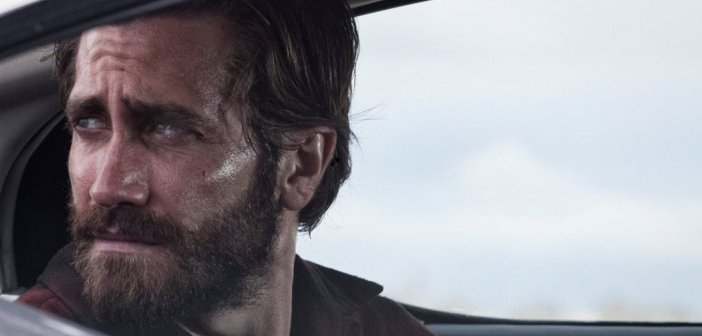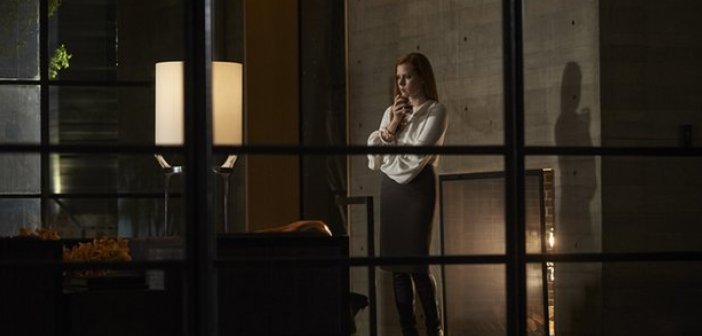Nocturnal Animals is Soaked in Sumptuous Design and Filled with Terrific Performances in Tom Ford’s Oscar Hopeful
Watching Nocturnal Animals, even without knowledge of its director Tom Ford’s public persona, one could figure he is involved in fashion design. Every frame of his latest looks stylised, as if each minute detail – from the extravagant clothing, to the Texan sunlight, to even the glasses the characters’ drink from – was agonised over at Kubrickian-esque lengths. Visually, it’s a thing of beauty, worth seeing on the big-screen to truly luxuriate in the movie’s intoxicating sense of style.
An amazing Amy Adams stars as Susan, an art gallery owner dissatisfied with how cold and sterile her life has become. Her husband (Armie Hammer) is never home and when he is, there is a glacially chilly atmosphere between them. Out of the blue, Susan is contacted by her ex-husband, Edward (Jake Gyllenhaal). He sends her a copy of his new novel, which is dedicated to her, entitled “Nocturnal Animals”, a phrase which holds symbolic resonance in regards to the ex-couple. The tale Edward weaved is a violent story of familial destruction and revenge, implicitly inspired by its writer and Susan’s divorce.

Following this, the film is split into three interlocking segments – Susan in the present, her relationship with Edward in the past, and the major events of her ex’s novel. The later revolves around a husband and father (also played by Gyllenhaal) who teams up with a Texan cop (Michael Shannon) to catch the gang (led by Aaron Taylor-Johnson), who raped and killed his wife and daughter.
From a story-telling stand-point (Ford also adapted the script from Austin Wright’s novel “Tony & Susan”), the film rather brilliantly leaves it to the viewer to draw parallels between Edward’s novel and his true-life experiences with Susan. There are obvious connections over the course the drama – the adjective “weak” is thrown at both Edward and his literary alter-ego. However, even up until the film’s nicely ambiguous ending, for the most part, its left to the audience to surmise what certain elements of the fictional story have to do with what we’ve seen from Susan’s flashbacks.
As I mentioned in the opening paragraph, Nocturnal Animals is very precise. Ford, along with his cinematographer Seamus McGarvey, goes to great lengths to create different visual aesthetics for each segment of the drama. The stark desert setting of Edward’s novel seems to signify a damaged soul laid bare. Meanwhile, Susan’s present day surroundings are noticeably clinical in appearance, featuring an overload of mirrored surfaces, perhaps representing the way in which the central character is agonising over her behaviour which led to her divorce. In contrast to these two visual styles, the scenes in the past portraying the beginning of her and Edward’s romance feel warm and idyllic, coated in golden tints. Amazingly, this juxtaposition never jars. Perhaps, it’s down to the way Ford and McGarvey, as the drama continues, interconnect these seemingly disparate patterns of imagery. A scene of Edward’s novel stand-in lying in a bath will transition to Susan lying in a path, representing how the fictional world is bleeding into reality.

Ford, despite this being only his second feature, is already a master of building atmosphere, taking cues from the masters such as David Lynch. Although the film maintains a very serious and dark tone throughout, he isn’t afraid of adding elements like humour or at one point, a sudden out-of-nowhere jump-scare to keep audiences on their toes. In lesser hands, these components would detract from the film, but under Ford’s watch they are utilised at the exact right moments and serve to accentuate a real dread. For instance, an unexpected big laugh from Shannon’s character during a supremely tense interrogation scene unsettles the viewer, making what happens next slightly more unpredictable.
The fictional and real worlds of Nocturnal Animals are both so enjoyable to witness that the viewer is left wanting more as the credits roll. A key example is the flashback to when Edward and Susan have their first date. The scene is so lovely, with Adams and Gyllenhaal sharing such strong chemistry with each other, that it’s a little disappointing to never see the couple during their happier days once again. Similarly, Ford employs such a great supporting cast (Hammer, Michael Sheen, Andrea Riseborough, Jena Malone), who all give fine turns but are never provided with enough time to truly shine, often appearing for only one scene. At moments, it feels as if the characters the non-leads inhabit are not people but in fact additions to the exquisite set-design. Laura Linney is the only performer outside of the main four (Adams, Gyllenhaal, Shannon and Taylor-Johnson) who is given any chance to leave a lasting impression, playing Susan’s venomous but equally realistic mother from hell.
The movie stands at 115 minutes in length, including the bizarre opening sequence of what Mark Kermode dubbed: “a slo-mo carnival of fleshy Americana”, which, despite Ford’s reasoning in interviews for its inclusion, leaves a bad taste given his association with the fashion industry. This leaves around 35 minutes to tell each segment. Personally, I’d love to see a longer cut of Nocturnal Animals which fleshes out its supporting characters and provides its central players with more back story. What we get in the finished film is very good but it feels like the bare-minimum, putting the movie just slightly short of being truly great.
Nocurnal Animals is in cinemas now. Check out the trailer below.
[arve url=”https://www.youtube.com/watch?v=5n750DzGzG0" maxwidth=”750"]
Featured Image Credit

